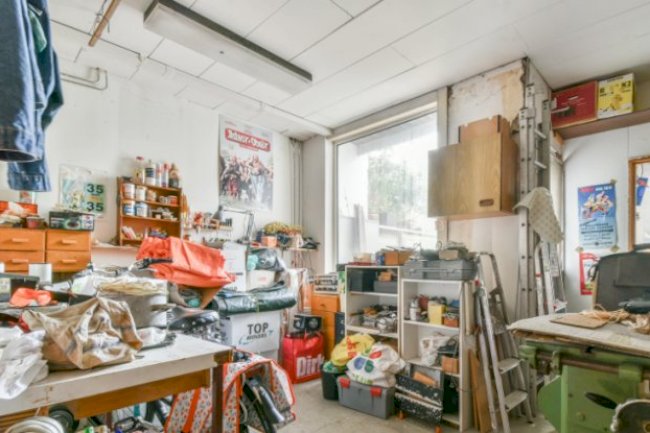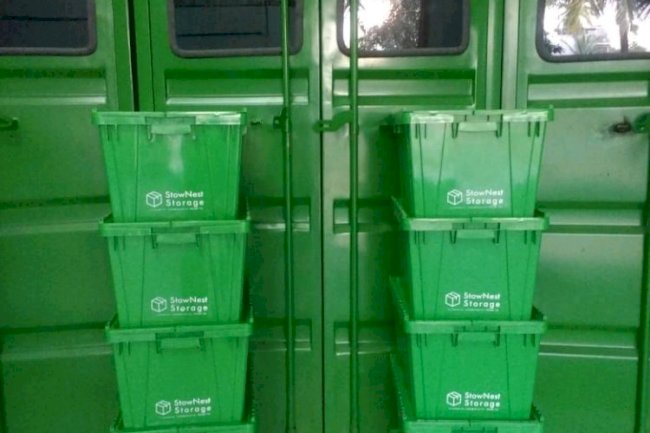Know How to properly Store Your Vehicle
Discover the importance of proper vehicle storage to protect your car, truck, motorcycle, or any other vehicle from damage caused by exposure to extreme temperatures, moisture, and sunlight. Learn practical tips to prevent rust, paint deterioration, and other issues that can significantly reduce the value and lifespan of your vehicle. Keep your vehicle in top working order with these essential storage tips.

Why is Proper Vehicle Storage Important?
Proper vehicle storage is essential for preserving the condition and longevity of a vehicle. Whether you own a car, truck, motorcycle, or any other type of vehicle, storing it properly when not in use can prevent a range of problems and keep it in top working order.
One of the main reasons why proper vehicle storage is important is to protect the vehicle from the elements. Exposure to extreme temperatures, moisture, and sunlight can cause damage to the exterior and interior of the vehicle. Over time, this damage can result in rust, paint deterioration, and other issues that can significantly reduce the value and lifespan of the vehicle.
Proper storage is important to prevent mechanical problems. When a vehicle sits for an extended period, fluids can settle and evaporate, causing dryness and corrosion. Additionally, Tyres can deflate and become misshapen, affecting their performance and safety. Proper storage can help prevent these issues by maintaining a stable environment with controlled temperature and humidity levels.
Proper storage can also help prevent theft and vandalism. Keeping your vehicle in a secure storage facility or garage can significantly reduce the risk of theft or damage caused by people or animals.
Overall, proper vehicle storage is crucial for protecting your investment and ensuring that your vehicle remains in excellent condition. By taking the necessary steps to store your vehicle correctly, you can extend its lifespan, maintain its value, and avoid costly repairs in the future.
Choosing the right Vehicle Storage Unit
There are several types of vehicle storage options available to vehicle owners, and each has its own benefits and drawbacks.
Indoor Storage: This involves storing your vehicle in an enclosed space, such as a garage or storage unit. It provides greater protection against the elements of theft, but it is typically more expensive than outdoor storage.
Outdoor Storage: This kind of vehicle storage involves parking your vehicle in an open area, such as a driveway, parking lot, or fenced yard. This is relatively inexpensive, but it provides minimal protection with no safety against the elements and theft.
Climate-Controlled Storage: This storage is a specialized type of indoor storage that provides precise temperature and humidity control. This storage is ideal for vehicles that are sensitive to extreme temperatures or humidity, such as antique vehicles.
Vehicle Storage Facilities: Vehicle storage facilities are specialized facilities that offer a range of storage options as mentioned above. These facilities typically provide 24/7 security, surveillance, and insurance coverage for your vehicle. However, they are typically more expensive than other types of storage options.
Preparing Your Vehicle for Storage
You must always clean your vehicle thoroughly inside and out, including the undercarriage. It’s important to remove any dirt, debris, or contaminants that could cause damage over time. Apply wax to the exterior to protect the paint from fading or cracking.
Look out to change the oil and filter and add fuel stabilizer to the gas tank. This will prevent the fuel from deteriorating and causing problems when you start the engine after a gap. Do not forget to check the top off other fluids, such as the coolant, brake fluid, and transmission fluid.
Remember to disconnect the battery and store it in a dry and cool place. This will prevent the battery from draining and becoming damaged during storage. Remove the spark plugs and spray some oil into the cylinders to prevent rust and corrosion.
Avoid flat spots on the Tyres by inflating them to the recommended pressure and put the vehicle on jack stands. Cover the Tyres to protect them from sunlight and other elements.
Finally, find a secure and dry location to store your vehicle, such as a garage or a storage unit. Make sure to use a breathable car cover to protect your vehicle from dust and debris.
Park your vehicle in the Storage unit
Park your vehicle in the storage unit once you have prepared your vehicle into a designated storage area or facility. A storage unit may refer to a rented space within a storage facility, for the purpose of storing your vehicle.
It is important to ensure that you park your vehicle in the designated spot and that you comply with any rules or regulations that may be in place, such as locking the vehicle and removing any valuables. Additionally, it is important to make sure that the storage unit is secure and that your vehicle is protected from the elements and any potential damage.
Check on your vehicle regularly
Regularly checking your vehicle is an important part of vehicle maintenance that can help you identify and address potential problems before they become more serious issues. Here are some things you can do to check your vehicle regularly:
Check your fluids: Make sure to regularly check your oil, transmission fluid, brake fluid, power steering fluid, and coolant levels. Low levels can indicate leaks or other issues while in the storage unit.
Check your Tyres: Make sure your Tyres are properly inflated and have enough tread. Check for any punctures, bulges, or other damage that could compromise their safety.
Check your brakes: Test your brakes to make sure they are working properly. Look for any signs of wear or damage, such as grinding or squeaking sounds.
Check your lights: Make sure all your lights are working, including your headlights, brake lights, turn signals, and taillights.
Check your windshield wipers: Make sure your windshield wipers are working properly and replace them if they are worn out.
Check your belts and hoses: Look for any signs of wear or damage on your belts and hoses, which can indicate potential problems.
In summary, secure vehicle storage is essential if you want to safeguard your car and make sure it stays in great shape. You can make sure that your vehicle is properly stored and ready to use when you need it by following the instructions provided in this guide. If you take the time to store your car properly, whether you're doing so for a few weeks or several months, it will be worth it in the end.
What's Your Reaction?

























